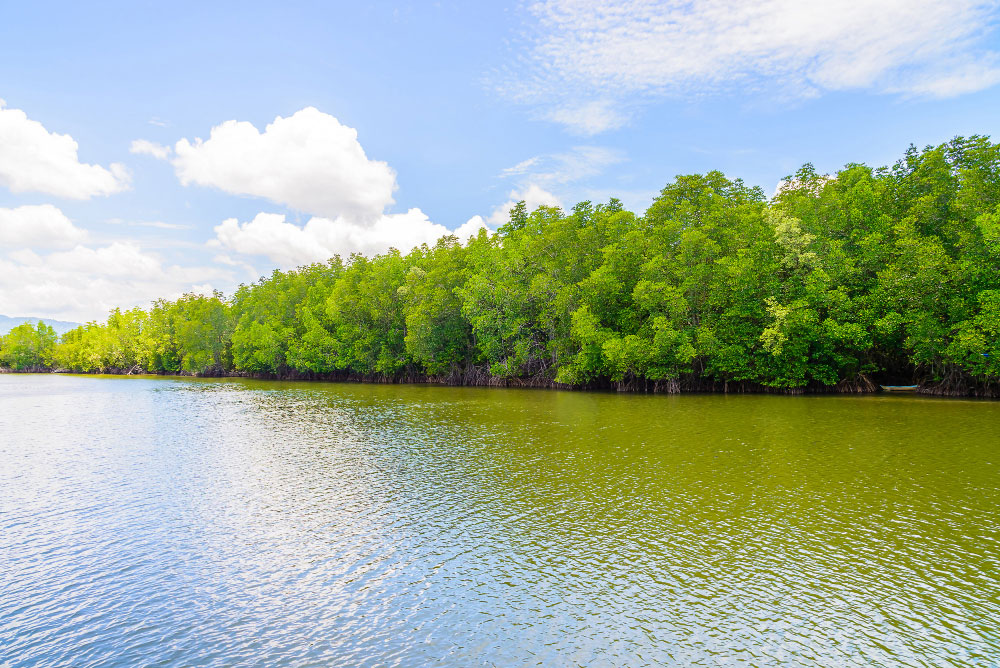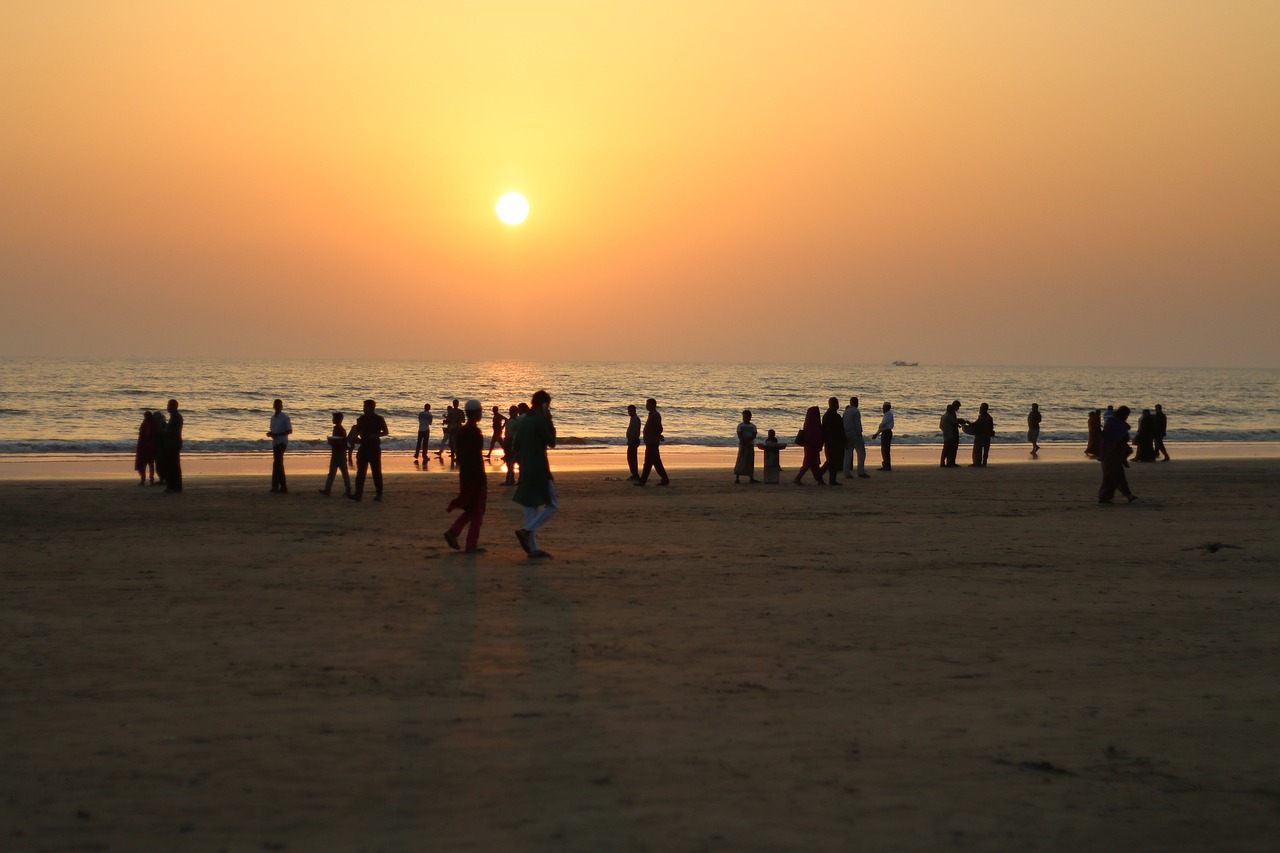The Sundarbans is the largest mangrove forest in the world, spanning the southern part of Bangladesh. The name “Sundarbans” translates to “beautiful forest” in the Bengali language. This unique ecosystem is characterized by a network of rivers, tidal waterways, and small islands formed by the confluence of several major rivers, including the Ganges, Brahmaputra, and Meghna.
Here are some key features of the Sundarbans:
Biodiversity:
The Sundarbans is renowned for its rich biodiversity and is a UNESCO World Heritage Site. It is home to a diverse array of flora and fauna, including the Bengal tiger, spotted deer, crocodiles, various species of dolphins, and a wide variety of bird species.
The Bengal tiger, often referred to as the “Sundarbans tiger,” is adapted to the mangrove environment and is known for its ability to swim in the saline waters.
Mangrove Ecosystem:
Mangrove forests play a crucial role in protecting coastal areas from erosion and cyclones. The Sundarbans acts as a natural barrier, mitigating the impact of storm surges on the coastal regions of Bangladesh.
The mangrove trees in the Sundarbans have adapted to the saline conditions, with unique features such as breathing roots (pneumatophores) that allow them to survive in waterlogged and muddy soil.
Flora:
The Sundarbans is home to a variety of mangrove species, including the Sundari tree (Heritiera fomes), which is one of the dominant species in the forest. Other mangrove species include the Gewa (Excoecaria agallocha), Keora (Sonneratia apetala), and the Baen (Avicennia officinalis).
Fauna:
In addition to the Bengal tiger, the Sundarbans is inhabited by various other mammals, reptiles, and amphibians. This includes saltwater crocodiles, Indian python, wild boars, and different species of monkeys.
The estuarine and freshwater crocodile species found in the region are adapted to both saline and freshwater environments.
Human Interaction:
The Sundarbans is home to a population of local communities whose livelihoods are closely tied to the forest. Fishing, honey collection, and traditional agriculture are among the activities that sustain these communities.
However, human-wildlife conflict is a concern, particularly with the presence of tigers that may occasionally come into contact with human settlements.
Conservation Challenges:
The Sundarbans faces various conservation challenges, including habitat loss, climate change impacts, and illegal activities such as poaching and logging.
Efforts are underway to balance conservation with sustainable development, and ecotourism has emerged as a potential avenue to generate income while promoting the protection of the mangrove ecosystem.
The Sundarbans, with its unique blend of ecological significance and natural beauty, stands as a testament to the delicate balance between human communities and the diverse wildlife that inhabit this extraordinary mangrove forest.
How you will go:
Transportation from Dhaka to the Sundarbans, a vast mangrove forest in southwestern Bangladesh, typically involves a combination of different modes of transportation. Here are the general steps you can take:
Dhaka to Khulna:
By Air: The fastest way to reach Khulna from Dhaka is by taking a domestic flight. Shahjalal International Airport in Dhaka is the primary airport, and Jessore Airport is the nearest airport to Khulna. From Jessore, you can continue your journey by road.
By Bus: Several bus services operate between Dhaka and Khulna. The journey takes several hours, depending on traffic and road conditions.
By Train: You can also take a train from Dhaka to Khulna. The train journey provides a scenic view of the countryside and is a popular option.
Khulna to Mongla:
From Khulna, you need to travel to Mongla, which is the gateway to the Sundarbans.
You can hire a taxi or take a bus from Khulna to Mongla. The journey takes around 4-5 hours by road.
Mongla to Sundarbans:
In Mongla, you can arrange a boat or launch to take you into the Sundarbans. There are various tour operators and private boats available for hire.
The journey through the waterways of the Sundarbans can vary in duration depending on your specific destination within the forest.
It’s recommended to plan your trip in advance and check the availability of transportation options. Also, keep in mind that weather conditions, particularly during the monsoon season, can impact travel plans. Additionally, consider booking accommodations and guided tours in advance to ensure a smoother experience in the Sundarbans.
Accommodations near the Sundarbans:
There are accommodations available in the nearby towns, especially in and around the gateway town of Mongla. Please note that the availability of hotels and ccommodations may have changed since then, and it’s advisable to check the latest information before planning your trip.
Here are some general recommendations for finding accommodations near the Sundarbans:
Mongla:
Mongla is the main gateway to the Sundarbans, and you can find hotels and guesthouses in this town.
Popular options include Pashur Hotel, Mongla Tourist Bungalow, and other local guesthouses.
Khulna:
As mentioned earlier, Khulna is a major city near the Sundarbans. You can find a range of hotels in Khulna, catering to different budgets and preferences.
Booking Platforms:
Use online booking platforms such as Booking.com, Agoda, or TripAdvisor to find and book accommodations in the nearby towns. These platforms provide reviews and ratings that can help you make informed decisions.
Local Recommendations:
Check with local tour operators or travel agencies as they might have information on accommodations near the Sundarbans.
Eco-Resorts:
Some eco-friendly resorts or lodges located on the outskirts of the Sundarbans may offer a more immersive experience. These establishments often focus on sustainable tourism.
Ensure that you plan your stay well in advance, especially during peak tourist seasons. Additionally, consider reaching out to local tourism offices or guides for the most up-to-date information on accommodations and other travel-related details.
If you think this article useful for you please like us and share it to your friends.
Thank you.



